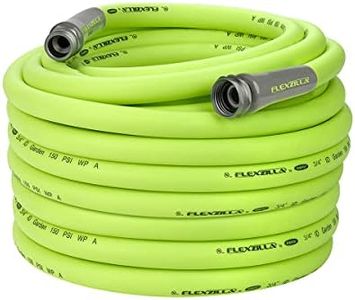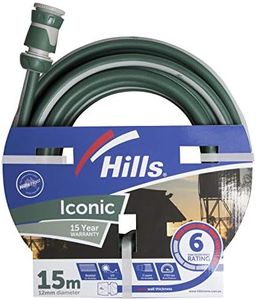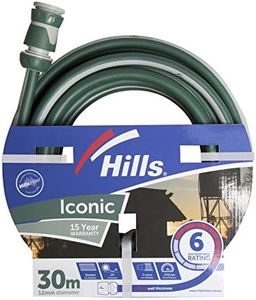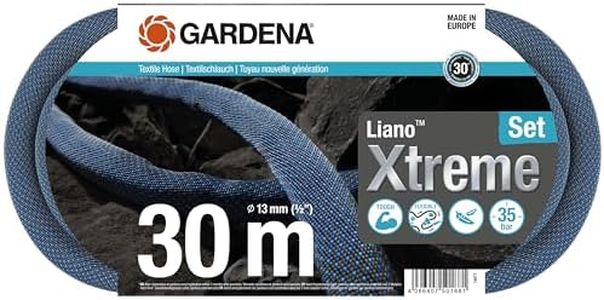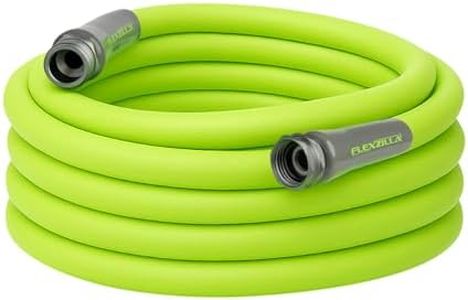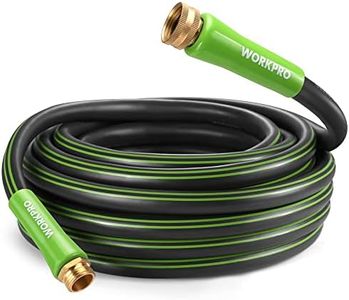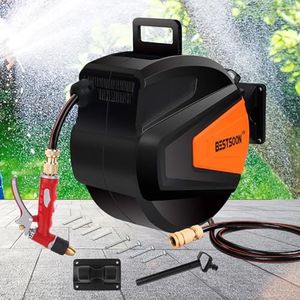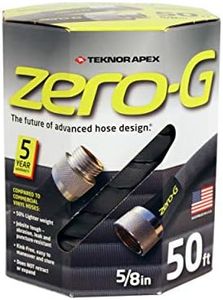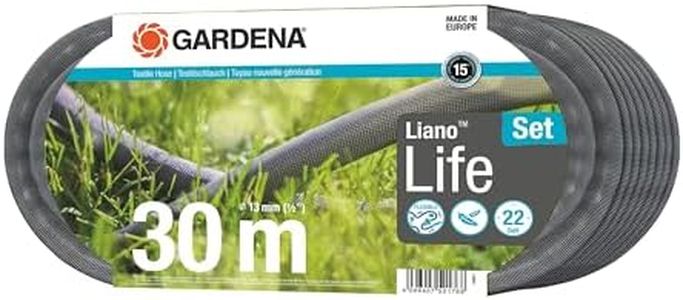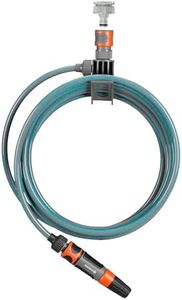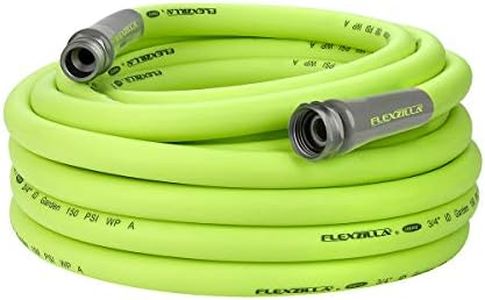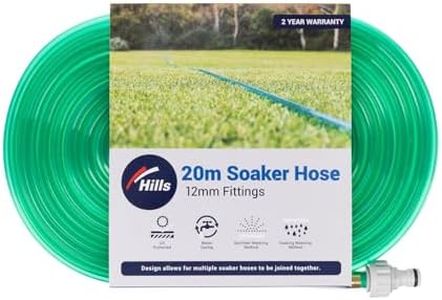We Use CookiesWe use cookies to enhance the security, performance,
functionality and for analytical and promotional activities. By continuing to browse this site you
are agreeing to our privacy policy
10 Best Rubber Garden Hoses
From leading brands and best sellers available on the web.Buying Guide for the Best Rubber Garden Hoses
Picking the right rubber garden hose can make your gardening and outdoor chores much easier and more enjoyable. A good hose should be durable, easy to handle, and suitable for your particular needs, whether that's watering a small patio garden or tackling a large yard. To choose the best hose, it’s important to understand the main specifications that can affect performance, user experience, and longevity.DiameterThe diameter of a garden hose determines how much water flows through it per minute. Typical hose diameters include 1/2 inch, 5/8 inch, and 3/4 inch. Smaller diameters like 1/2 inch are lightweight and easy to handle, suitable for light watering tasks or smaller spaces. 5/8 inch is the most common choice, balancing good water flow and manageable weight. The 3/4 inch size provides the highest flow, which is best for tasks requiring lots of water, like washing cars or large gardens. Choose the diameter based on your desired water pressure and how far you need to carry water.
LengthHose length is how far your hose can reach from the water source. Hoses commonly come in lengths from 25 to 100 feet. Shorter hoses (25-50 feet) are easier to coil, store, and maneuver, making them ideal for small yards or patios. Longer hoses (75-100 feet) can reach far corners of your garden but are heavier and more difficult to handle or store. Consider measuring your yard to find out the minimum length you need and avoid going much longer than necessary for convenience.
FlexibilityFlexibility refers to how easily the hose bends and moves. A very flexible hose is easy to wind, unwinds smoothly, and is less likely to kink while in use, but extremely soft hoses can sometimes collapse under pressure. Stiffer hoses may resist kinking but are harder to maneuver, especially around tight corners. Think about how often you’ll move the hose around obstacles or need to coil it up. If you value easy handling, look for one labeled as kink-resistant or with a high flexibility rating.
Durability/Material QualityRubber hoses are valued for their durability and resistance to cracking, splitting, and leaks, especially in hot or cold weather. The thickness of the rubber and whether it’s reinforced can greatly affect lifespan and performance. Reinforced rubber hoses handle higher water pressures and rough usage without damage. If you plan heavy-duty use, drag your hose over rough ground, or leave it outside, opt for a thick, high-quality rubber hose with reinforcement.
Fittings/CouplingsFittings or couplings are the metal or plastic connectors on each end of the hose that attach to faucets or nozzles. Brass fittings tend to be more durable and leak-resistant than aluminum or plastic ones and usually last as long as the hose itself. Some hoses also have crush-proof couplings, which are excellent if you might step on the hose often. If you want hassle-free connections that don't corrode or leak, prioritize hoses with solid brass or high-quality metal couplings.
WeightThe weight of a garden hose can affect how easy it is to use or move around, particularly for longer lengths. Heavier hoses (often those that are thicker or reinforced) are more durable but can be tiring to drag, especially for those with less strength or mobility. Lighter hoses are easier to maneuver but may trade off some sturdiness. Consider your strength and how often you’ll need to move the hose; choose a weight you can handle comfortably without sacrificing needed durability.

